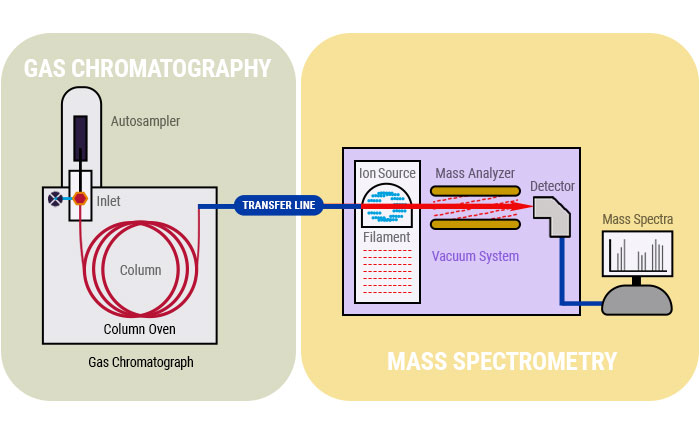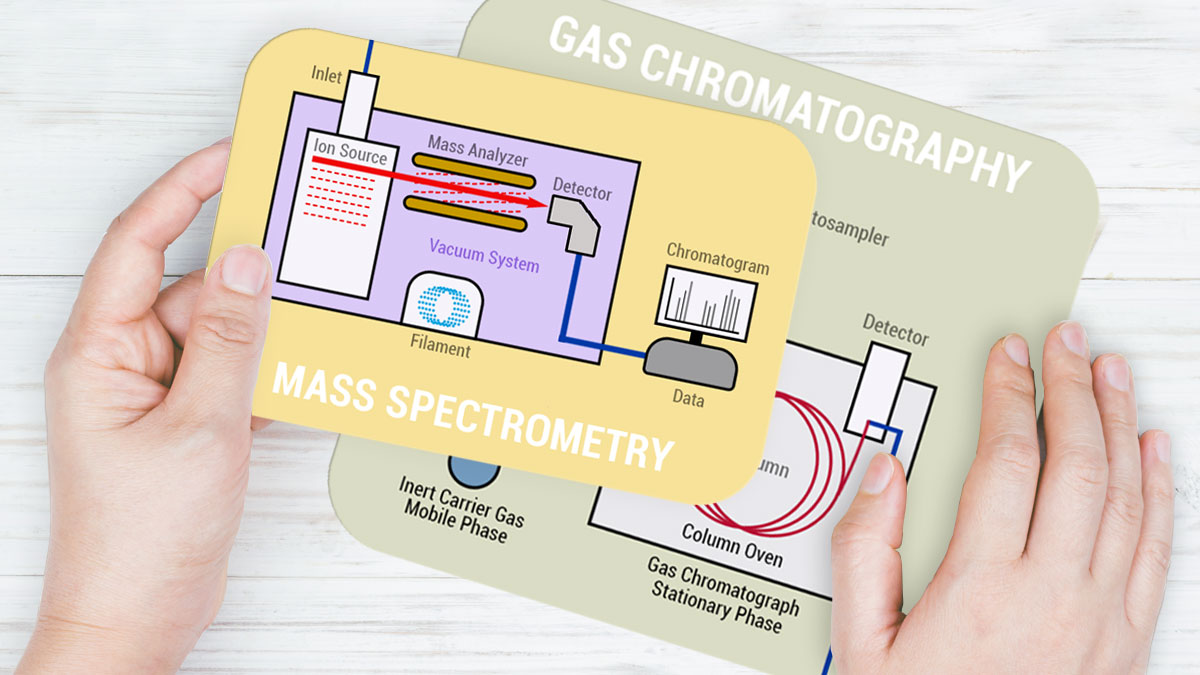Chromatography Explained: How Mass Spectrometry Adds Information to Your Analysis
As discussed in the blog post “Gas Chromatography Explained: What It Is and How It Works” GC was defined – as well as how it works, and a quick 5-step overview. This post will focus on Gas Chromatography Mass Spectrometry (GC/MS) – and its role in the analytics lab.
Gas Chromatography Mass Spectrometry Definition and Analogy
Gas Chromatography/Mass Spectrometry (GC/MS) is an analytical process used for identifying unknown substances or contaminants that are present in very low quantities.
GC/MS is used to deliver information on sample quality and content by analyzing for specific compounds, making it a popular solution for many labs and manufacturers. So, let’s talk about how this process works and how it helps many types of industries, including pharmaceutical, industrial, food and drink, fragrance, epoxies, plastics, paper, and forensics.
If you’re wondering how a sample is analyzed, get ready for detailed explanation. First, a sample is injected into a gas chromatograph, where components are separated and then, the components pass into a device known as a mass selective detector. At this stage, a mass spectrum is obtained and compared against standard reference libraries to identify unknown components in the sample.
At best, a non-specific test can only statistically suggest the identity of a substance in a sample, which sometimes results in false positives. GC/MS, however, is a specific test and can, as a result, be used to positively identify the actual presence of substances in a sample. It gives another dimension of information to identify substances. This is particularly helpful in very complex mixtures, or mixtures that have very similar compounds that need to be distinguished. Either gaseous or liquid samples can be analyzed as small as several micro-liters. The whole process of GC/MS analysis might take seconds, depending on the complexity of the compound to be analyzed.
As you can see in the illustration below, the two major components of GC/MS are the gas chromatograph and the mass spectrometer. Utilizing a capillary column with critical dimensions and phase properties, the gas chromatograph allows the different molecules of a sample to separate as the sample travels through the column. The source of the mass spectrometer, downstream from the gas chromatograph, breaks each molecule into ionized fragments and then a mass analyzer filters these fragments, which are then detected and compiled in a mass spectrum according to their mass-to-charge ratio.

Step-by-Step GC/MS Analysis:
- Inject sample into Gas Chromatograph: The sample is injected into a port with heating capacity of up to 500°C, where the material is then volatilized.
- Separation of gaseous components as they flow through the column: The column is positioned into an oven, which controls temperatures up to about 400°C.The internal column surface is coated with a material that will interact with the various chemical compounds in the sample separating them based on size or polarity. Sample components that are more volatile and will typically travel through the column more quickly than others.
- Analysis in the Mass Spectrometer: The separated components flow directly out of the column and into the MS, which has three internal steps:
- Ionization source – components are blasted with electrons, causing them to break up and fragment into positive ions.
- Filter – the ions pass through a mass analyzer that can be a quadrupole, an ion trap or a time of flight. A mass analyzer is capable of filtering the different fragment ions.
- Detector – counting the number of filtered ions, the information is sent to chromatography data system software, and a mass spectrum, a distribution of ions of different mass on charge is generated.
The mass spectrum is typically used to identify the components by comparing each to reference libraries of over 350,000 unique spectra. To quantify compounds within the analyzed sample, analysts establish a standard curve of known concentrations of each material.
While GC/MS analysis is a very useful technique, it is often combined with other methods to find comprehensive solutions to many analytical questions.
Discover PerkinElmer Gas Chromatography-Mass Spectrometry Portfolio and how it can help your lab with GC/MS analysis.
Resources:

